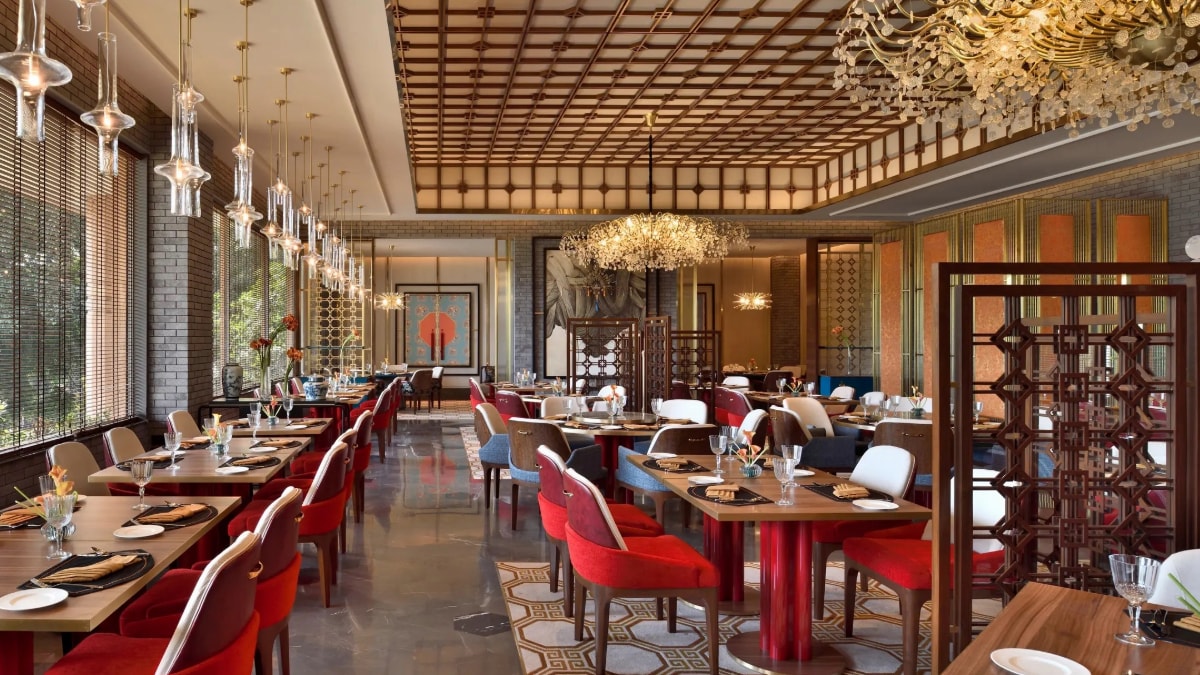
Walking into the House of Ming at the Taj Mahal Hotel, Delhi, is like walking into another world, where tradition marries modernity and every dish is an odyssey through the eclectic landscapes of Chinese cuisine. In my years as a lifestyle journalist, I have been to many dining spaces, but this was something else. The new look menu is dedicated to Sichuan, Cantonese, and Hunan cuisines, all brilliantly reimagined by Chef Arun Sundararaj and his team.
The moment you’re seated, the atmosphere lets you know that the groundwork for an incredible dining experience has been laid. The decoration is subtle but elegant, beautifully furbished with the right amount of Chinese style and contemporary design. While we first took in a beautiful ambience, created by the dim lighting, clinking of fine porcelain, and the subtle aroma of jasmine tea brewing in the background – that’s just what this experience was about: our culinary journey.
Our culinary adventure began with a standout selection of dim sums. The Lobster, Ham, and Cheese dim sum, with smoked ham, gouda, and lobster broth, was rich and flavorful. We also enjoyed Morel and Edamame dim sums, featuring young soya beans and smoked chilli oil, and Shrimp and Bamboo Shoot dim sums, elegantly rolled in pok choi.
The Pickled Radish and Chilli dim sums offered a zesty punch, while the Lamb, Shiitake, and Celery dim sums with fermented chilli were a savoury highlight. Soy Mince and Sweet Pepper Chaoshou with poached wontons and homemade hot sauce added a delightful kick. The Barbeque Shiitake Bao, baked with Chinese spices, was mouthwatering, and the Pickled Vegetable Wonton with beetroot and purple potato wrapped up our dim sum experience perfectly.


The real innovation came with the large plates. The Hainanese chicken rice was a nostalgic nod to traditional comfort food but carried some sort of refined elegance that took it far from its humble roots. Whereas the Mala cumin roast pineapple was a surprising delight, sweet and spicy, but very addictive, the real showstopper had to be the mushroom wrapped in tofu skin. The textures and flavours were so combined that every bite was a discovery in itself.

The large plates were where the innovation truly shined. The Hainanese chicken rice was a nostalgic nod to traditional comfort food, yet it carried a refined elegance that elevated it beyond its humble roots. The poached chicken was tender and flavorful, perfectly complemented by aromatic rice and a homemade chilli pickle that added just the right amount of heat. The stir-fried chicken with bamboo shoots was another highlight, with sliced chicken and black fungus swimming in a spicy oyster sauce that brought the dish to life.
Then came the stir-fried shredded lamb, a dish that was all about bold flavours. The combination of coriander and chilli gave the lamb a vibrant kick that was hard to resist. The Suān là shredded butternut squash was an exploration of Sichuan-style hot and sour flavours—each bite delivering a punch of tanginess that balanced the sweetness of the squash.
Perhaps the most unexpected delight was the wok-charred Brussels sprouts. Coated in a sesame chilli sauce, these humble vegetables were transformed into something extraordinary. The char added a smoky depth, while the sauce provided a spicy, nutty undertone that made this dish a surprising favourite
But this experience didn’t end with the food alone. Attention to detail is where the House of Ming scores highly, and even here it is evident in the choice of beverages. The Brewing Cart, housing 14 aromatic tea flavours, is evidence of the restaurant’s all-encompassing approach to a dining experience. Every tea was poured into perfect accompaniment with our courses, enhancing the flavours and providing a moment of calm after each vibrant dish.
The cocktails inspired by the five elements of nature each had an element of surprise. My personal favourite was a concoction that balanced the fiery warmth of Sichuan pepper with the cooling notes of cucumber – an unexpected combination that worked beautifully.

But, in a city as vivacious as Delhi, where eating out often appears to be ridiculously crowded, House of Ming comes as a refreshing pause. A place where time matters, taste lingers on your palate, and the service is as warm as the food is innovative. The rejuvenated House of Ming menu is much more than a list of dishes; it’s an invitation to relish the classic and modern Chinese culinary art.
As I left the restaurant, the thought crossed my mind that House of Ming is more than a place to eat; it’s a place to connect – with the food, with your companions, and with the rich tapestry of flavours that make Chinese cuisine so special. The dining experience here really will be one to remember long after the meal ends, and I, for one, am already planning my next trip.





